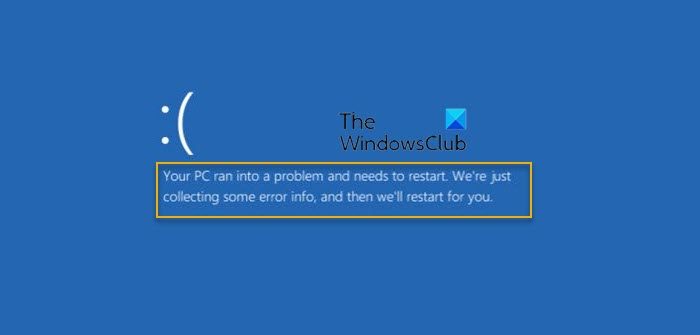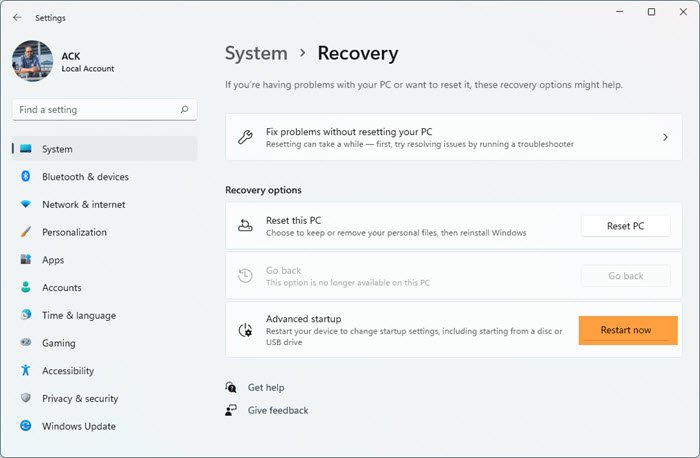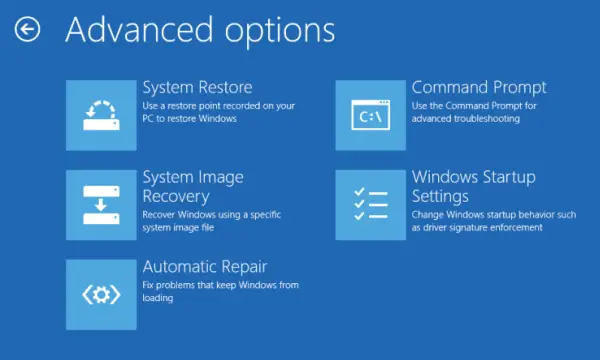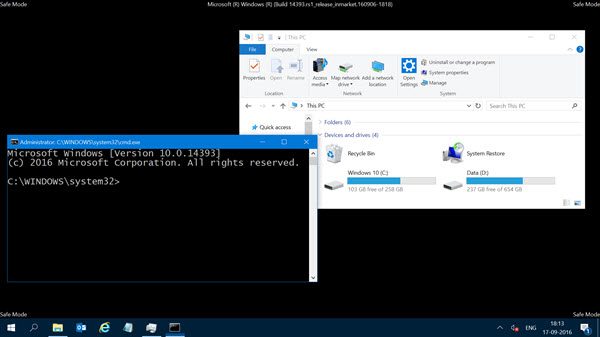If you see a message Your PC ran into a problem and needs to restart on a blue screen on your Windows 11, Windows 10 or Windows Server computer systems, it is possible that your system may have crashed due to various reasons, like a bad driver, memory issues or corrupted system files.

Starting with Windows Vista, the operating system attempts to fix the problem on its own in most cases, but if it cannot recover on its own, it will show a blue stop error screen. When Windows encounters a condition that compromises safe system operation, the system halts. This condition is called a ‘Bug Check’. It is also commonly referred to as a System Crash, a Kernel error, a System fault, or a Stop error. When Windows encounters such a serious error that forces it to stop running and restarts the system.
Your PC Ran Into A Problem And Needs To Restart
The full message you see would be:
Your PC ran into a problem and needs to restart. We’re just collecting some error info, and then we’ll restart for you.
Alternatively, you could also see the following message on a light blue screen:
Your PC / Computer ran into a problem that it couldn’t handle and now it needs to restart. You can search for the error online.
The system will not display the detailed Stop error information, as it used to in earlier versions of Windows because in most cases users found it overwhelming.
Once the PC restarts on its own, see if you can safely and successfully log on to the desktop. If you can, then fine. If you do not see this error screen again, even better and you may assume that that issue has been resolved by the operating system.
Safe Mode or Advanced Startup Options let you repair your Windows PC either by restoring it to its previous working condition or when in safe mode, you can uninstall software or drivers which might have caused the issue. Advanced Startup option offers you System Restore, System Image Recovery, Startup Settings, Startup Repair, and several such recover or repair options. Safe Mode offers you access to all system tools like the CMD, System Restore, etc., that can help you. So when your computer doesn’t boot normally, is stuck in an endless reboot loop or stuck on some screen, then your focus should be on getting into Safe Mode or boot to the Advanced Startup Options screen
If you cannot reach the desktop, or if you continue to see this screen frequently, then consider the following suggestions. Go through the entire list and then decide what you would like to implement.
- Run Automatic Startup Repair
- Carry out a few operations via Advanced Startup Options
- Boot into Safe Mode and reverse changes
Run Automatic Startup Repair

If you can access the desktop then you can use the option in Settings and click on Restart now button against Advanced startup to initiate the process.
If you cannot access Settings and want to Run Automatic Startup Repair manually, you need to boot into Advanced Startup options. This will let you start Windows from an external device, change Windows startup settings or restore Windows from a Factory image.
Carry out a few operations via Advanced Startup Options

Once you boot into Advanced Startup options you can use the command prompt to Run ChkDsk, Run SFC, and update Drivers and Firmware if need be.
Using the System Restore option to restore your PC to a good prior point is also an option that you can consider.
Boot into Safe Mode and reverse changes

If you recently made any changes and then started facing this issue, then boot Windows into Safe Mode and reverse any changes you may have made – maybe uninstall programs, Windows Updates, Driver Updates, etc. Ensure that all your device drivers are up-to-date. Intel users may use Intel Driver Update Utility, whereas AMD users may use AMD Driver AutoDetect.
If the above suggestions do not help, then you may need to find out the exact error code and message. carry out these steps;
- Disable the auto PC restart option
- Note down the error message
- Make Windows display the BSOD information
- Identify the Code and then see this BSOD Guide
1] Disable the auto PC restart option
This screen stays for a few seconds before Windows restarts. This way we may unable to read what is written. To get around it, one has to disable the auto PC restart option from the StartUp & System Recovery settings. Knowing the error code can help identify the problem/solution.
So in order to make the system not restart automatically, you will have to do the following:
Open Control Panel. Next click on System And Maintenance > System > Advanced System Settings > Advanced tab > Under Startup And Recovery > Click Settings > Clear the Automatically Restart check box > click OK.
Read: Windows computer restarts without warning.
2] Note down the error message
Now if you see this screen, the first thing you need to do is note down the error message you see. It could be HAL INITIALIZATION FAILED as you see in the image or it could be anything else. If you are using VMware ensure that you are using its latest version.
If this information helps, you fix the issue, good, else move on to the next step.
3] Make Windows display the BSOD information
You may need to force Windows to display the Stop Error information. Now the next time you get a Blue Screen, you will see the detailed Stop error information, which may help you with advanced troubleshooting.
4] Identify the Code and then see this BSOD Guide
Once you are equipped with the Stop Error message and the Bug Check message and code, you can proceed to see this Windows Stop Errors Guide, which will help you troubleshoot the problem.
See this post if you receive a Your PC will automatically restart in one minute message in Windows 11/10.
Thank you anand, Really thanks for your post, Actually last 3 months back i have same problem…still now also thanks for sharing wonderful info & keep posting…Anand
Had this problem a couple of weeks ago and I had to refresh the PC.
My Gateway laptop is doing this and I don’t understand how to fix it. Can anyone help?
Installed windows 10. Now get “password incorrect” and then ” Your PC ran into a problem and needs to restaRt….”
What can I do?
I also got this error last night. Doing the free upgrade o Windows 10 from Windows 7.
It just stays on that blue screen error and does not reboot.
If I physically shut it down and power it back on again it goes back to the same error
Same problem here, which i don’t understand…
I run into this problem whenever I disable Avast Shield on Windows 10 PC.
Same problem here. Not sure what to do.
Don’t disable it then ;)
‘ This is just insanity in reference to , Computer has run into a problem, needs to restart”. This should never exist. .What has taken place is when the conception of computers there were these young pimpled kids designing and putting in these nightmare over-installments. They over-filled this little box with what if’s, as=, ‘Do you want to close all tab’s?,speed up browsing, need to restart & on and on.and these forced windows stay in your face til an x off..Also there are no such thing as buffering,ask Netflix..this is out dated but will cost money to redo so we are left with status quo. Until demanded a change all will remain the same.
I also got this error last night. Doing the free upgrade o Windows 10 from Windows 7.
It just stays on that blue screen error and does not reboot.
If I physically shut it down and power it back on again it goes back to the same error
Thanks.
How can I go into control panel if my computer keeps restarting and I cannot get in. This is not helpful at all.
Hi Laura, I’m wondering the same thing. I get the stop code screen on start up and I can’t get passed it. Were you able to eventually solve it? Let me know. Thanks.
Hello
Uh,, This usually happens in Windows 10 with outdated Windows version. When you try to sleep your laptop for 3-5 times a day, the problem begun to arise.
The solution is simple. Make sure you windows 10 is up-to-date. Make sure you’ve all your drivers updated as well as all your security.
I hope this is definitely help.
To anyone experiencing this problem: Uninstalling the current NVIDIA drivers, and reverting to a slightly older version completely solved this in my case. None of the other suggestions did, although I got some extra uptime running a CHKDSK /F.
Good luck everyone.